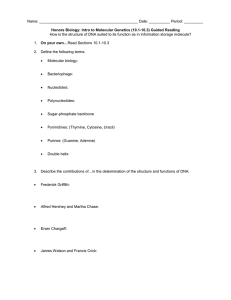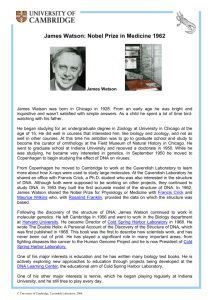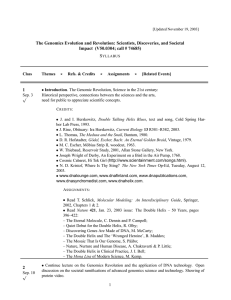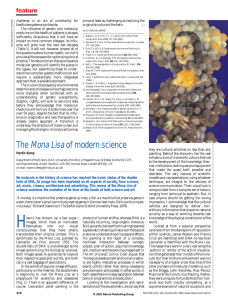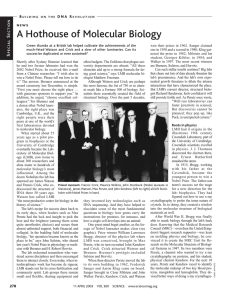A biochemist goes to Washington: what I learned in 12 years
advertisement
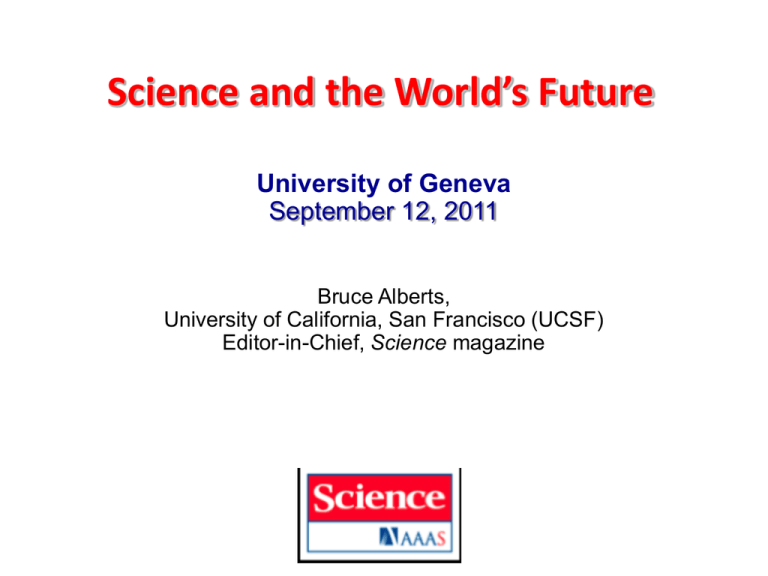
Science and the World’s Future University of Geneva September 12, 2011 Bruce Alberts, University of California, San Francisco (UCSF) Editor-in-Chief, Science magazine Talk Outline: 1. A little personal history 2. Some important policies for strengthening science around the world Crick I was a high school student, when the revolution in biology began with the Watson and Crick structure for DNA in 1953 Watson was only 25 years old Watson Jim Watson today As Jim Watson aged, dramatic progress was made in our understanding of how chromosomes replicate What are the proteins that catalyze the reaction, and how do they copy the two anti-parallel DNA stands in the DNA double helix? There were many puzzles to unravel and it was great fun to try to solve them 1965 – 1966, a wonderful year in Geneva as a postdoctoral student with Alfred Tissieres and Dick Epstein (Institut de Biologie Moleculaire) • Introduced to bacteriophage T4 • Developed DNA-cellulose affinity chromatography • Met Uli Laemmli (would soon recruit him to Princeton) Dick Epstein, July 2009 1966 - 1986, my lab worked with bacteriophage T4 A model organism for studying DNA replication Discovery of the “protein machine” that makes a new DNA helix by copying an old one, as predicted by Watson and Crick We now know that life is possible because of the thousands of different types of protein machines in each cell in our bodies, each with a different function. Most of them remain to be understood – we know many of their components, but not how they work. Understanding each protein machine is one of many great challenges for young scientists! How does a protein machine work? The magic of protein machines is best appreciated by a movie that shows such a machine in action – the protein machine that replicates DNA. The movie was made by Bruce Stillman at the Cold Spring Harbor Laboratory, as part of the 50 year DNA celebration there. It can be found on Cold Spring Harbor DNA Learning Center website in the section that deals with “Copying the code”. Click here to see this video of DNA replication: http://www.youtube.com/watch?v=gL3aigv7w4A The beauty of science The world looks so different after learning science. For example, trees are made of air, primarily. When they are burned, they go back to air, and in the flaming heat is released the flaming heat of the sun which was bound in to convert the air into tree. And in the ash is the small remnant of the part which did not come from air, that came from the solid earth, instead. These things are beautiful things, and the content of science is wonderfully full of them. They are very inspiring, and they can be used to inspire others. Richard Feynman, Nobel Prize in physics
